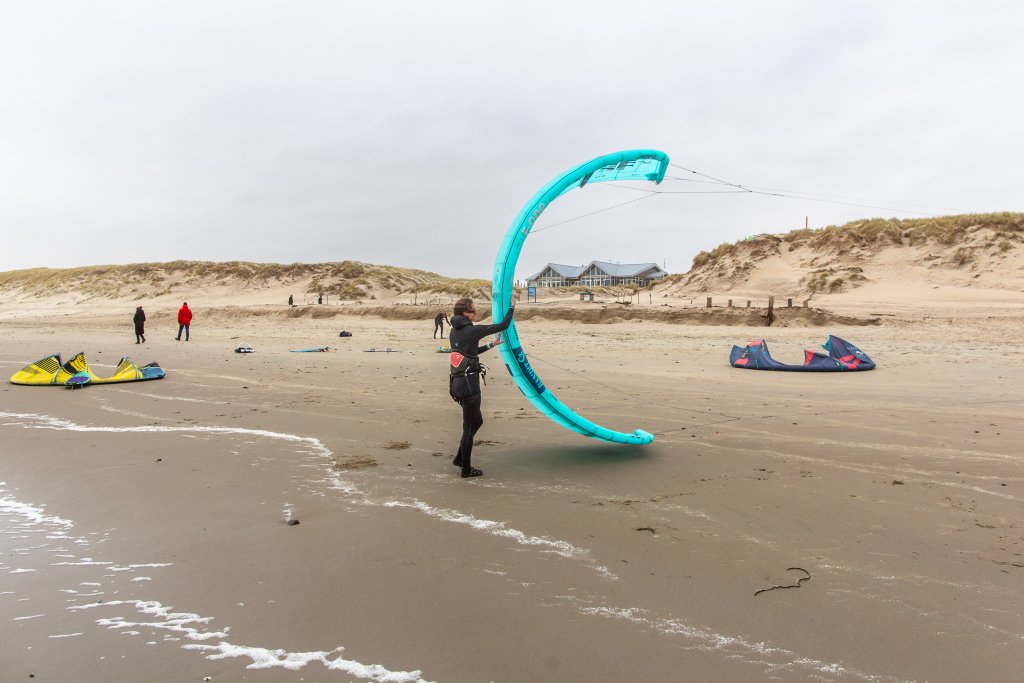Joint approach to strengthen Texel coast and nature
The coastal parties have chosen four measures that will protect the southwest coast of Texel from high water, strengthen nature and provide space for recreation. These include a different way of depositing sand off the coast, constructing "notches" (wind slits) in the outer row of dunes, removing dune tops and determining a location for beach pavilions for the next ten years.
The province of North Holland, municipality of Texel, Hoogheemraadschap Hollands Noorderkwartier (HHNK), Rijkswaterstaat, Staatsbosbeheer and Defensie have agreed on this. The College of B&W of Texel also agrees to submit this to the municipal council.
Delegate Rosan Kocken (province of North Holland): "With these measures, we are giving space to the sea and wind to let sand from the beach drift into the dune area. This will make the dunes wider and stronger and they will grow along with the rising seawater. At the same time, we are restoring valuable dune nature. This is a great result of good cooperation."
The coastal parties are further developing these measures into one overall design. After the summer, there will be an information meeting for residents about the chosen measures and the next steps.
Coastal Maintenance
Rijkswaterstaat will adjust coastal maintenance for the southwest coast of Texel. Rijkswaterstaat sees opportunities in spraying a larger amount of sand in 2027/2028 for a period of four to six years, instead of once every three years. This will be worked out in the coming months. This other way of applying sand is better for maintaining the coastline, water safety and wildlife. By depositing sand less frequently off the coast, bottom life and also beach recreation are less disturbed.
Construction of notches
There will be ten notches (wind slots) in the outer row of dunes along the North Sea coast of Texel. These will be constructed in phases over a longer period of time. The removal of dune tops in the sea strip between Paal 8 and the Jan Ayeslag will also take place gradually. Staatsbosbeheer is further developing the best locations. The notches will be designed so that the bottom is meters above sea level. That way, no seawater can flow into the hinterland.
Agreements with pavilion owners
The beach pavilions at post 9 and post 12 have to be moved every time the dunes grow. This makes it difficult for the pavilion owners to invest in their business. Therefore, HHNK, the Municipality, Rijkswaterstaat and Staatsbosbeheer will work with the entrepreneurs to determine a place where the pavilions can remain for the next ten years. This will give the entrepreneurs more security and the recreationists a place to go.
Hoogheemraad Arnold Langeveld (HHNK): "It is wonderful to experience how together we are arriving at a modern, sustainable and robust coastal policy in which water safety can serve nature, the community and beach entrepreneurs. By connecting with the various parties, listening and showing empathy, we are taking beautiful steps towards the future."
Research
The package of measures was chosen based on extensive research into coastal dynamics in southwestern Texel (from Paal 12 to the Hors). An environmental working group of landowners, entrepreneurs and conservationists actively participated in the process. Residents have also been involved.
The province of North Holland, municipality of Texel, Staatsbosbeheer, Hoogheemraadschap Hollands Noorderkwartier, Rijkswaterstaat and Rijksvastgoedbedrijf/Defensie are working together on the Coastal Vision and Multi-Year Program for the Texel beach and dune area.
